Return of Iconic French Works, Eastern Orthodox Icons, in Homage to Ridley-Tree
Reprise of Corot-based Exhibition at Westmont Museum of Art in Montecito Pays Tribute to Ridley-Tree Patronage
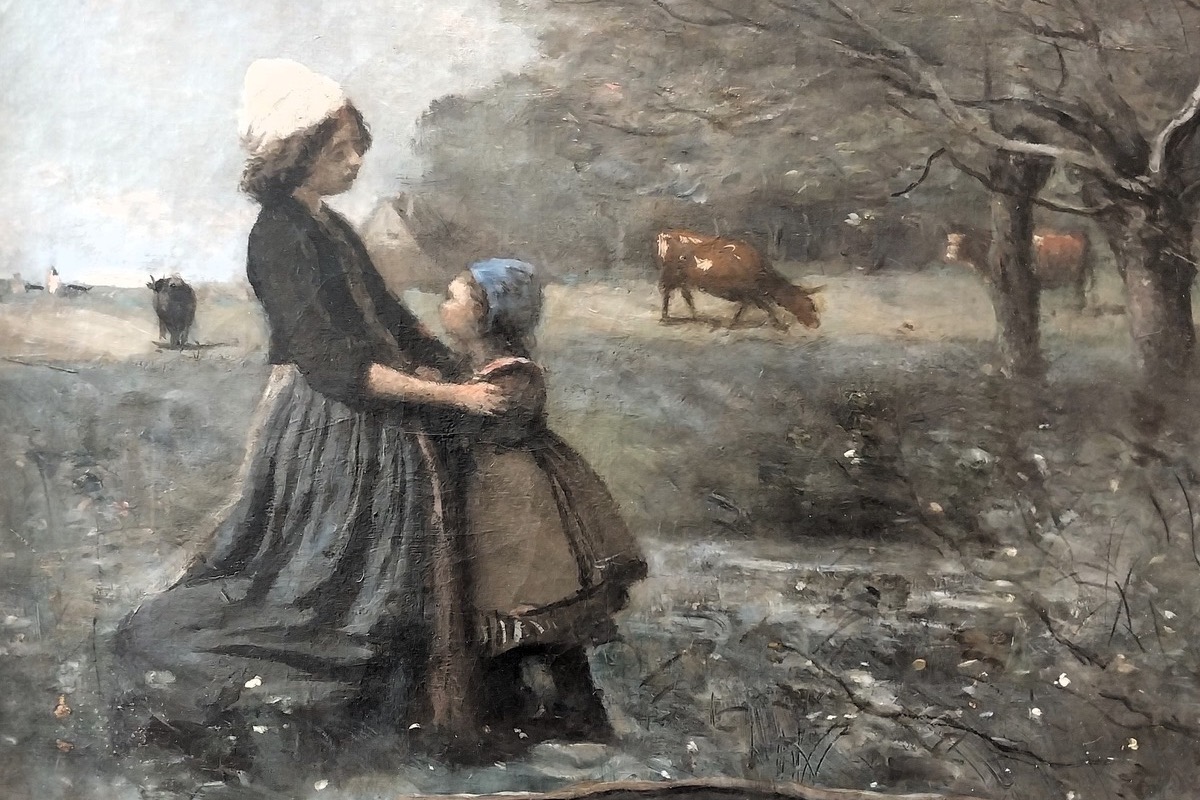
One side effect of a visit to the current exhibition at the Westmont Ridley-Tree Museum of Art may be a strong case of déjà vu all over again. The multi-part show, grounded in a selection of canvases by famed 19th century French painter Camille Corot, instantly triggers memories of a similar affair in this art space in 2013. Then, and now, the exhibition from the art collection of Lord Paul and Lady Leslie Ridley-Tree and with many images from that earlier show making an encore appearance.
There are, of course, critical distinctions between the initial and current shows, starting with the fact that the famously philanthropic grand couple — whose presence looms imposingly over the main gallery in Bo Bartlett’s large portrait — have passed on, he in 2006 and she in 2022, at age 98. Since the first brush with the Corots, organizationally, Westmont’s small miracle of an art museum has subsequently taken its rightful place in the pantheon of important art spaces in the region, under the expert guidance of director Judy Larson.
In the current show, with the title Camille Corot to Orthodox Icons: Lady Leslie Ridley-Tree’s Gifts to the Collection, the curatorial overview extends beyond the first show’s tighter focus. Off to the side, and nestled in its own moodily dim-lit enclosure in the Museum’s main gallery space, are several examples of the Eastern Orthodox Icon paintings, rugged to the eye and the touch (and touching is allowed, as objects of spiritual veneration and mediation). These works were placed in the “prayer room” in the lavish home of the Ridley-Trees, attesting to Lady Leslie’s spiritual faith (she was a member Montecito’s All-Saints-by-the-Sea Episcopal Church).
More to the point of a Corot connection, the exhibition also includes several impressive canvases lining the entryway gallery from the early 19th century Barbizon School of French painting of which Corot was a prominent figure. The Barbizon objective was literally and figuratively heading out into the woods — specifically the forest of Fontainebleau— and escaping the stylistic strictures of the Academy and Neoclassical style than prevailing in the French artworld.
Among the highlights of the Barbizon section are Charles Francois Daubigny’s “Printemps sure l’Oise (Springtime on the Oise River),” an idyllic riverside milieu with a cow (a common subject in this movement) at water’s edge, and the suitably atmospheric “Sur le bord de la riviere (On the Side of the River)” by Hippolyte-Camille Delpy.
In the main gallery, a selection of Corot prints congregate on the right — turn right at the epic Lord and Lady portrait — but these necessarily pale in comparison with the artistic power, measured natural awe and pure magnetism of his paintings, hanging on the left side of the space. Corot (1796-1875) was a disciplined artist, who produced nearly 3,000 paintings in his 78-year life span, and also something of a rebel in his early years as an artist.
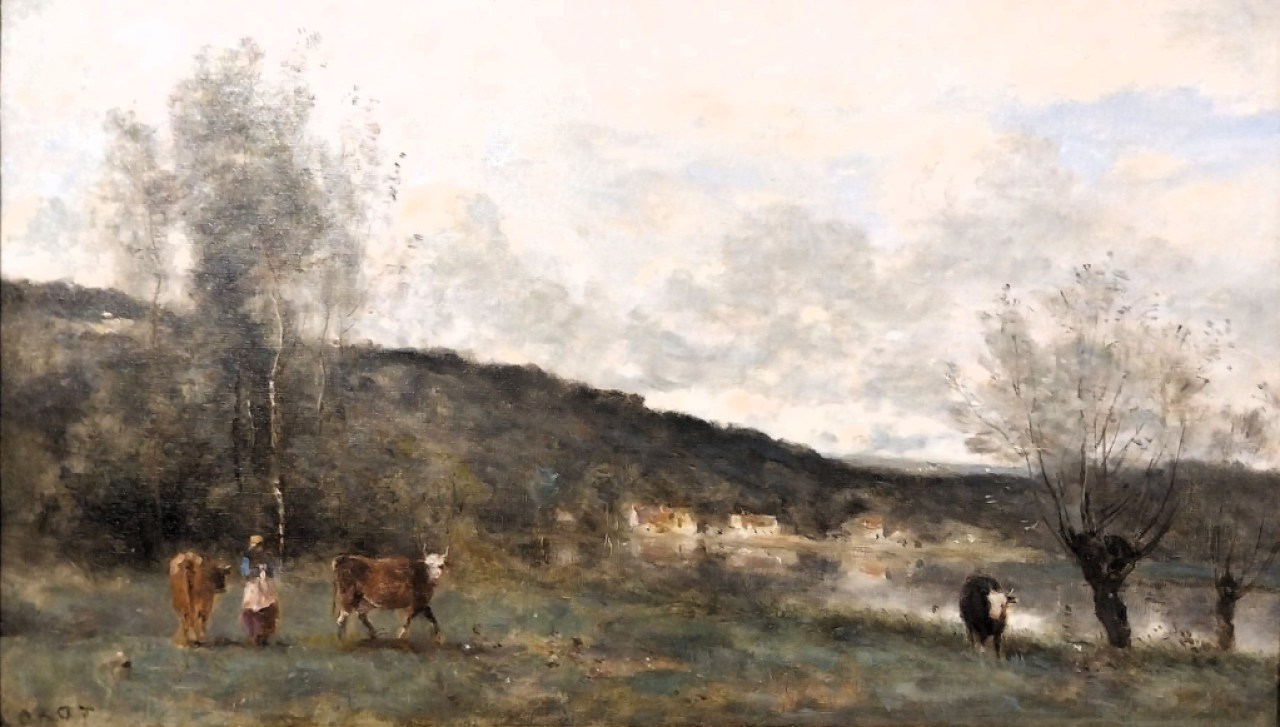
What we find in this modest but enriching sampling of canvases is the handiwork of a painter who refreshed landscape painting ideals, and brought a loose naturalism to the business of depicting rural life and natural expanses. His was part of the move away from extant norms, a certain up-the-Academy attitude, which both overlapped and informed the development of the yet-more radical Impressionism movement later in the 19th century.
Westmont’s Corot component brings back fond memories from our encounter 11 years ago, and also illustrates the range of his interests, in form and content. Corot’s large painting “Ronde de Nymphs (Dance of the Nymphs)” leans in the direction of both in-the-moment atmosphere painting and the era-spanning powers of myth, with its nymphs in a free dance mode, in a crepuscular forest setting.
That painting contrasts with the warm peasant life study of “Les Deux Sœur dans la prairie (Two Sisters on the Prairie),” with its brusque and unfussy brushwork, or “Bretonne allailant son enfant (Breton Woman Nursing Her Baby).” With this painting, teeming with rounded forms, Corot pays respects to the quality of fecundity, the texture of Breton life and also the art historical “Madonna and Child” tradition.
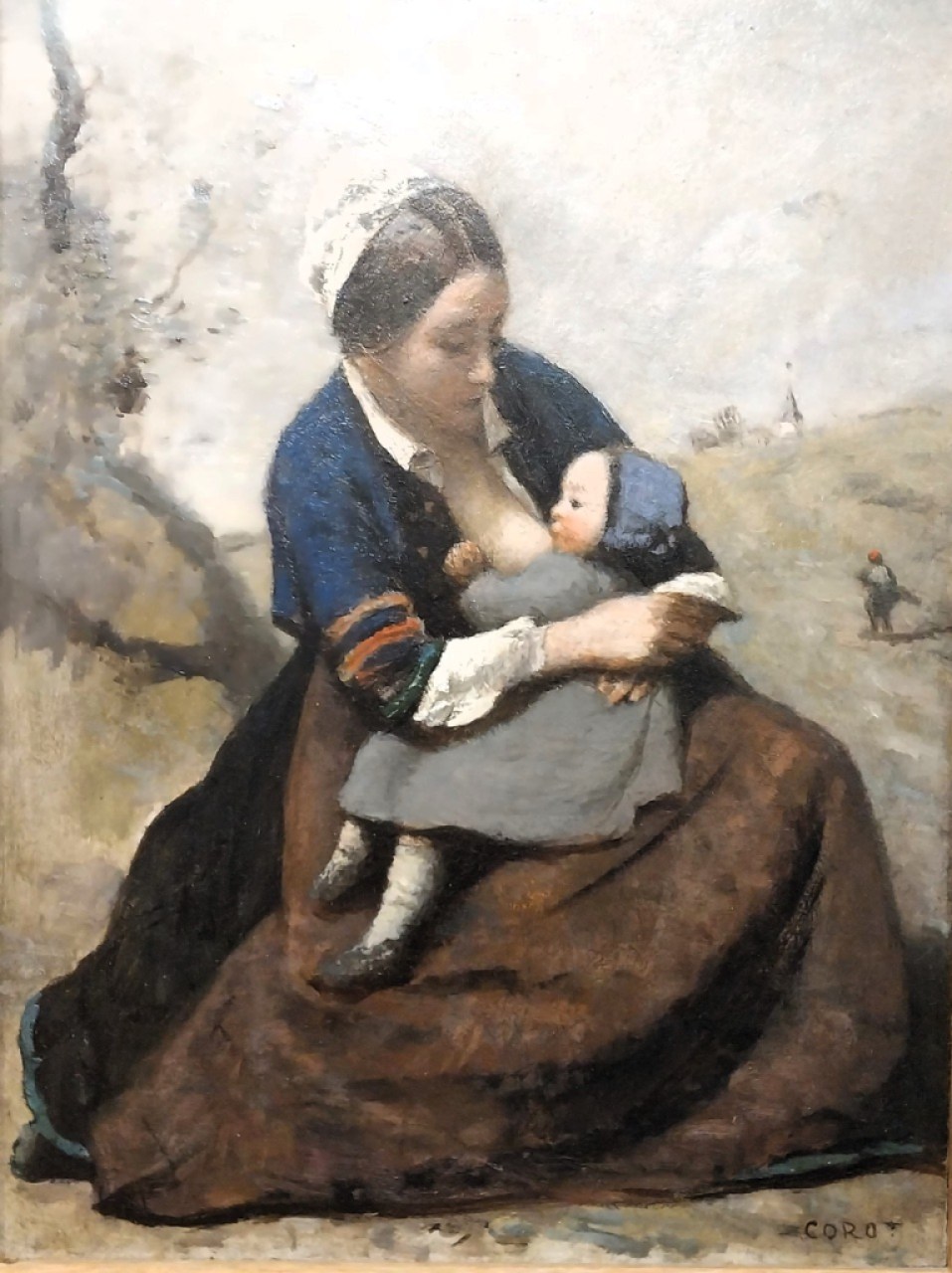
And yes, in keeping with the Barbizon way, bovine subjects also have their field day in Corot’s oeuvre, as seen in “Luzany-The Valley,” painted in 1872, three years before his death. Cows have been immortalized here, celebrated both as individual specimens and as compositional foils, strategically positioned in a horizontal pictorial space.
Thanks to this museum’s namesake and generous patron, the Westmont Ridley-Tree Museum of Art can boast a healthy Corot corner in its permanent collection. The various elements involved in Corot’s work conspire to make the paintings timeless, and well worth a close-up look at least every decade or so.
Camille Corot to Orthodox Icons: Lady Leslie Ridley-Tree’s Gifts to the Collection is on view at the Westmont Ridley-Tree Museum of Art through March 23. The Museum is open weekdays from 10 a.m.-4 p.m. and Saturdays from 11a.m.-5p.m., see westmont.edu/museum.
Premier Events
Sun, Apr 28
6:00 PM
Santa Barbara
AHA! Presents: Sing It Out!
Thu, May 02
5:00 PM
Santa Barbara
Things with Wings at Art & Soul
Sat, May 04
10:00 AM
Lompoc
RocketTown Comic Con 2024
Sun, Apr 28
11:00 AM
Santa Barbara
Santa Barbara Earth Day Festival 2024
Wed, May 01
7:30 PM
Santa Barbara
American Theatre Guild Presents “Come From Away”
Thu, May 02
5:00 PM
Santa Barbara
100th Birthday Tribute for James Galanos
Thu, May 02
5:00 PM
Santa Barbara
Meet the Creator of The Caregiver Oracle Deck
Fri, May 03
4:00 PM
Santa Barbara
Santa Barbara Fair+Expo “Double Thrill Double Fun”
Fri, May 03
8:00 PM
Santa barbara
Performance by Marca MP
Sat, May 04
10:00 AM
Solvang
Touch A Truck
Sat, May 04
11:00 AM
Santa Barbara
Mental Wellness Center’s 28th Annual Arts Faire
Sat, May 04
11:00 AM
Santa Barbara
Community History Day
Sat, May 04
3:00 PM
Solvang
The SYV Chorale Presents Disney Magic Concert
Sun, Apr 28 6:00 PM
Santa Barbara
AHA! Presents: Sing It Out!
Thu, May 02 5:00 PM
Santa Barbara
Things with Wings at Art & Soul
Sat, May 04 10:00 AM
Lompoc
RocketTown Comic Con 2024
Sun, Apr 28 11:00 AM
Santa Barbara
Santa Barbara Earth Day Festival 2024
Wed, May 01 7:30 PM
Santa Barbara
American Theatre Guild Presents “Come From Away”
Thu, May 02 5:00 PM
Santa Barbara
100th Birthday Tribute for James Galanos
Thu, May 02 5:00 PM
Santa Barbara
Meet the Creator of The Caregiver Oracle Deck
Fri, May 03 4:00 PM
Santa Barbara
Santa Barbara Fair+Expo “Double Thrill Double Fun”
Fri, May 03 8:00 PM
Santa barbara
Performance by Marca MP
Sat, May 04 10:00 AM
Solvang
Touch A Truck
Sat, May 04 11:00 AM
Santa Barbara
Mental Wellness Center’s 28th Annual Arts Faire
Sat, May 04 11:00 AM
Santa Barbara
Community History Day
Sat, May 04 3:00 PM
Solvang

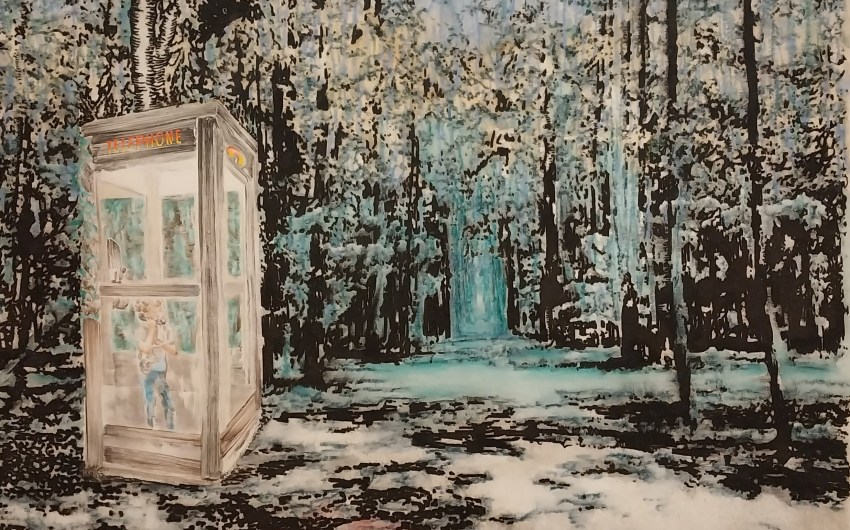
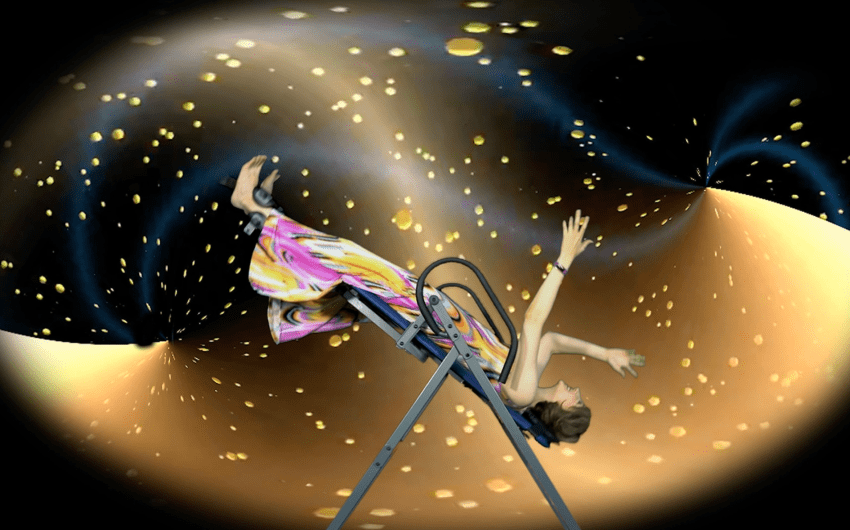
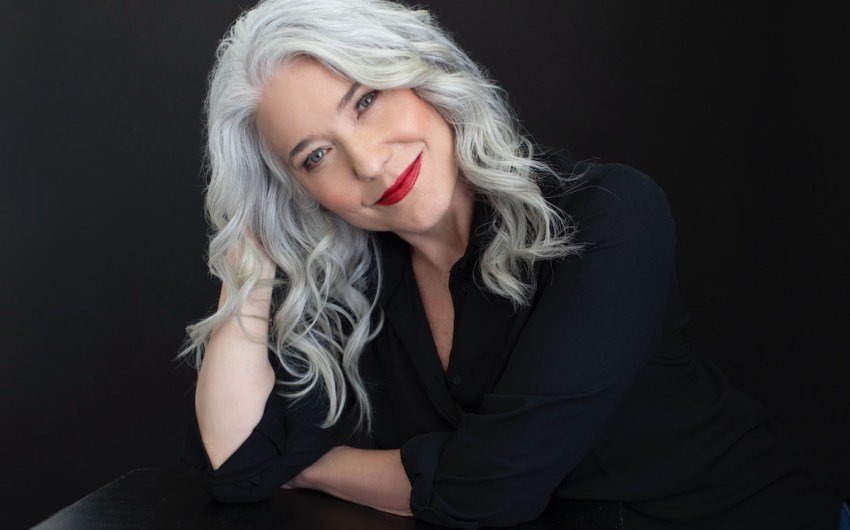






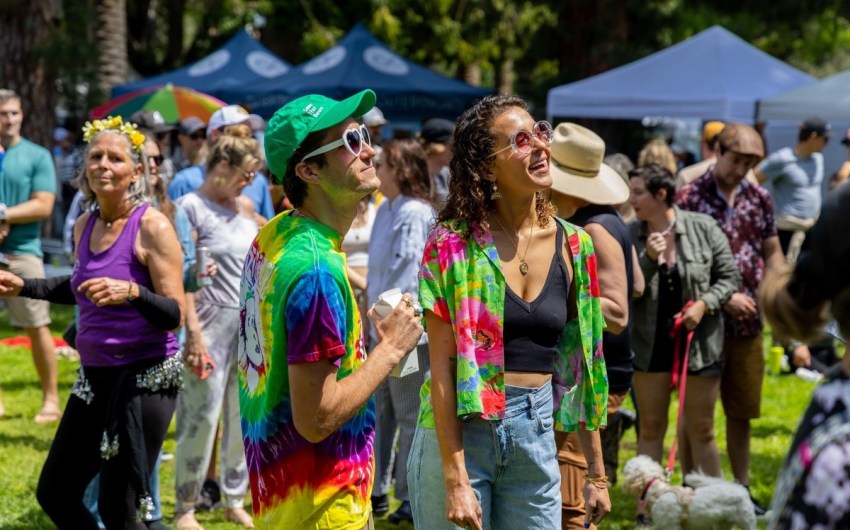











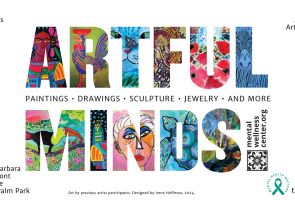


You must be logged in to post a comment.